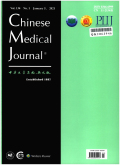Multi-link Vision and MiniVision stent registry in Asian patients with coronary artery disease: a prospective, multi-center study
摘要Background Recent studies have showed that the fine mesh stents are associated with a significant reduction in both clinical and angiographic re-stenosis of the coronary arteries. To maintain a very satisfactory radio-opacity using the stents, Guidant of the USA has designed a new type of bare metal stents (BMS)-Multi-link (ML) Vision / ML MiniVision stents. The clinical outcomes of Asian patients with coronary artery disease (CAD) after implanting the Multi-link Vision or MiniVision stent were investigated in this study.Methods An observational, prospective, multi-center, non-randomized post marketing registry was conducted to demonstrate the efficacy of the BMS- ML Vision / ML MiniVision stents. The primary end point of the registry was clinical target lesion revascularization (TLR) at a 6-month follow-up. The major secondary end points included the rate of major adverse cardiac events (MACE) and serious adverse events (SAE) in hospital and at 6 months; and the rate of clinical TLR as a function of the type of angina. A total of 429 Asian people with 449 lesions from 14 centers were selected for this study. The average reference diameter of the lesions was (3.0±0.5) mm, and the mean length was (15.7±5.0) mm.Results The successful rate of the procedure was 99.3%. Twenty-five percent of the lesions were treated by direct stenting without pre-dilation. Eighty-six percent of the lesions were implanted with ML Vision stent. After the 6-month follow-up, the rate of clinical TLR was 1.4%. The MACE, SAE and target vessel revascularization (TVR) were 6.8%, 3.5%and 1.4% respectively.Conclusion The current registry showed the excellent 6-month clinical outcomes of ML Vision/ML MiniVision stents in Asian patients with CAD.
更多相关知识
- 浏览89
- 被引3
- 下载0


相似文献
- 中文期刊
- 外文期刊
- 学位论文
- 会议论文



 换一批
换一批 换一批
换一批



